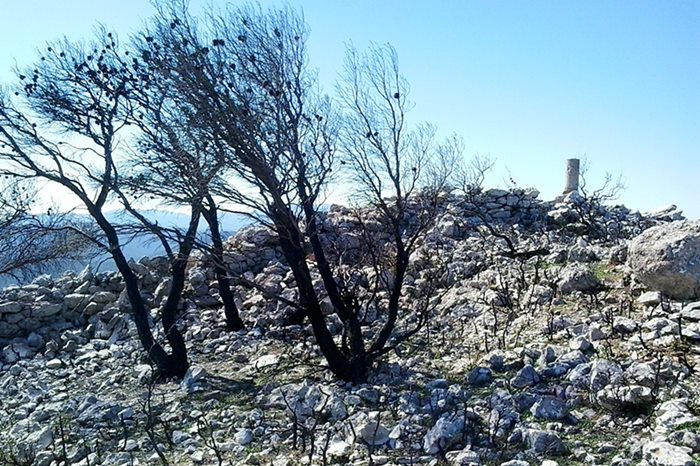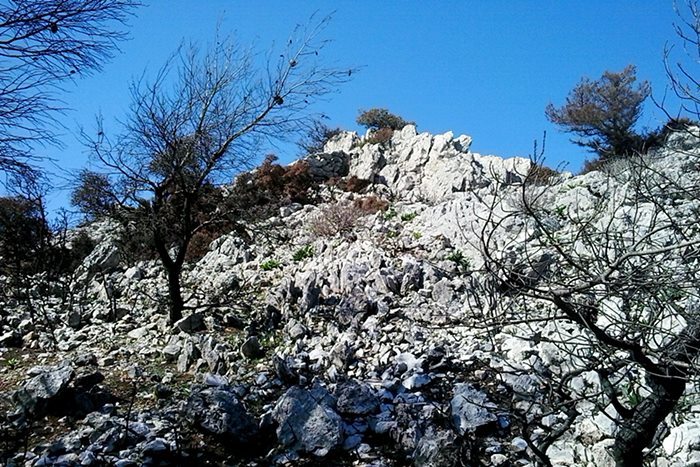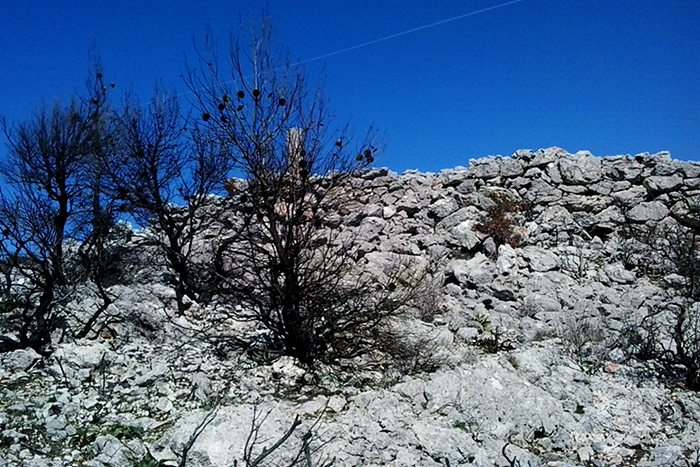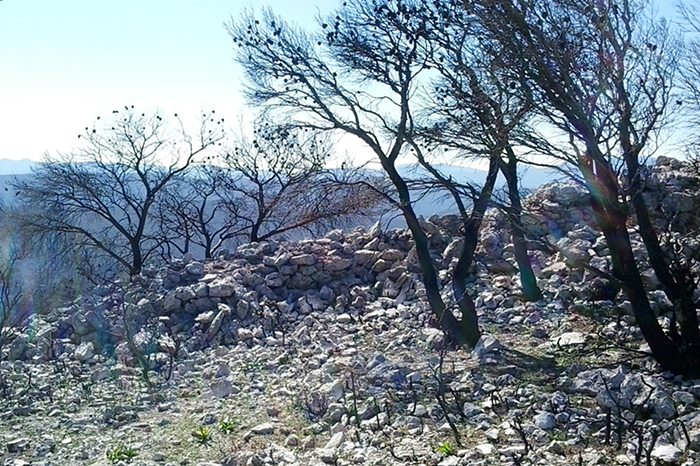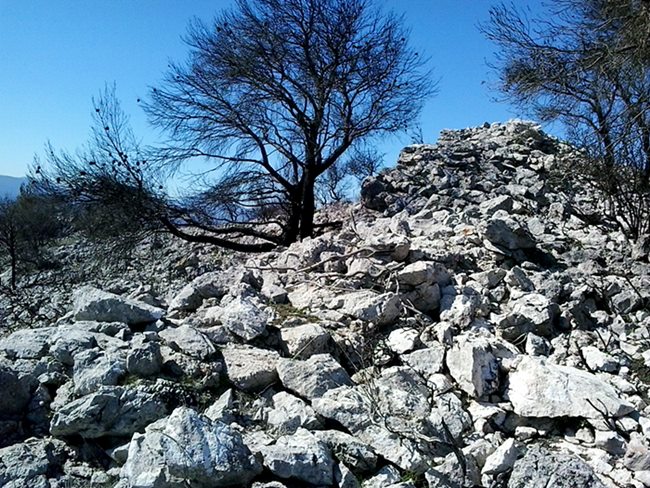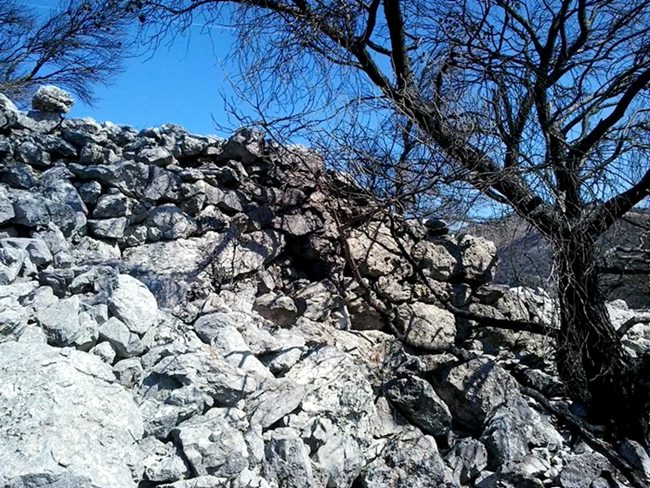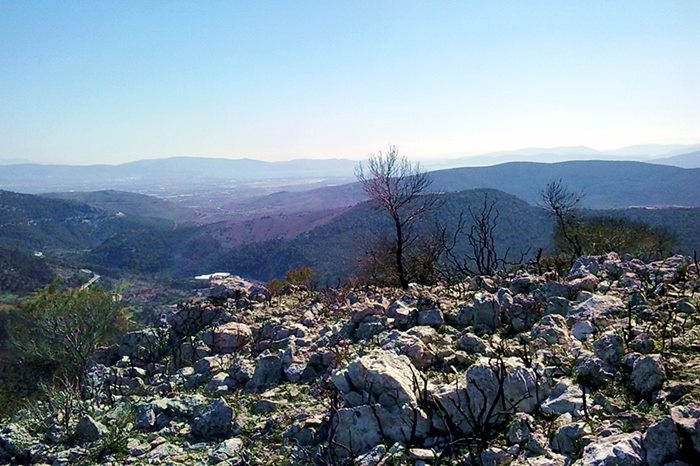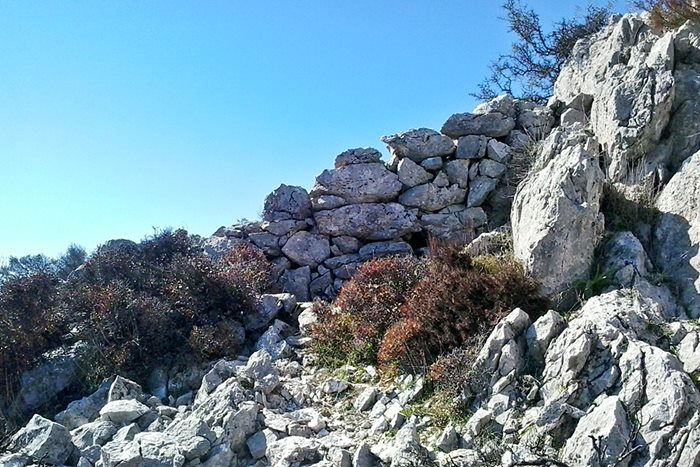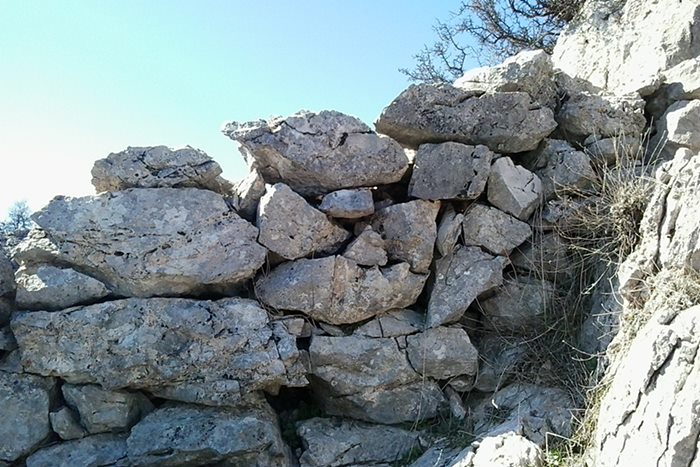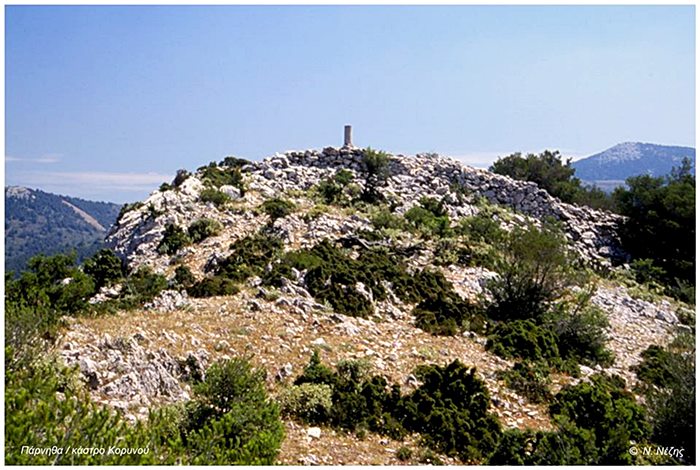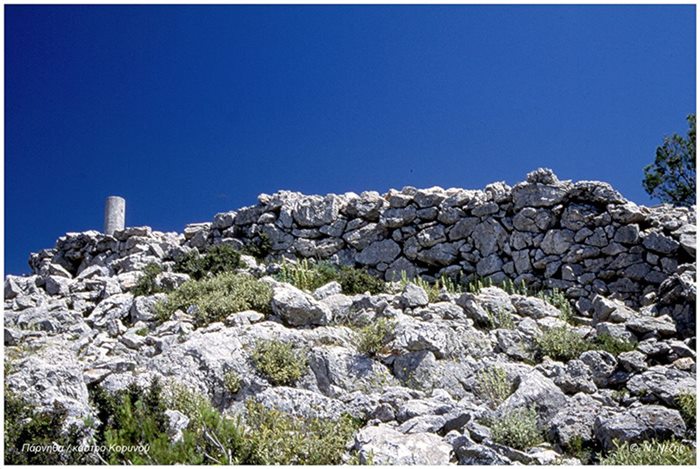Prasino, Tanagra, Boeotia,Central Greece
Fortress of Corynos
| Location: |
| On a rocky hill at the western side of Mt. Parnitha, 3km south of the village Prasino of Boeotia |
| Region > Prefecture: | 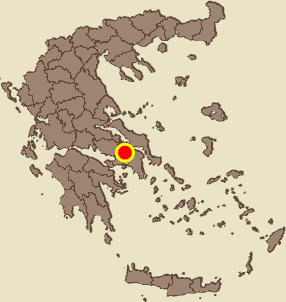 |
| Central Greece Boeotia | |
| Municipality > Town: | |
| City of Tanagra • Prasino | |
| Altitude: | |
|
Elevation ≈ 490 m (Relative Height≈60 m) |
| Time of Construction | Origin | |
| Unknown | ANCIENT |
|
| Castle Type | Condition | |
| Dry-Stone Fortification |
In Ruins
|
Scattered ruins of a fortification on a rocky hill of the western side of Mt. Parnitha.
Its dating is uncertain but most probably it was an ancient construction that may have been used occasionally in the Middle Ages.
Location & Strategic Scope
The castle is located east of Oinoe (old name Mazi) and south of the village Prasino of Boeotia. It is very close, to the south, of the important ancient Athenian fortress of Panakton.
The hill dominates over the ancient road from the plain of Boeotia to the plains of Attica and to the Thriasion Pedion.
History
During the antiquity there were many fortresses on Mt. Parnitha to guard the northern borders of Athens territory. One of the most important was Panakton.
However the fortress of Korynos does not seem to be part of this ancient defense system since its construction is different and it is too close to Panakton (which means that there was no reason for another castle so near, unless it was used during a military operation against Panakton as a temporary camp for the attacking force).
The site is basically undatable due to the absence of findings and of buildings in the interior. The administrative decision that has given to Korynos the status of an ancient site (Φ.Ε.Κ. 26Β/1993) dates it back to the proto-geometric period which means 1000-900 BC! This unusual chronological placement at the dark centuries is rather the result of the difficulty to place the castle with certainty in some other period.
Structure, Fortification & Buildings
The remains of the castle are inside of a partly preserved enclosure with maximum dimensions 90✖50 m.
The walls have a double facade consisting of big stones without mortar. The remaining parts have a maximum height 2.1m and a thickness of 1.60 to 1.80m.
The northern part of the castle was naturally protected and had no fortification. The best preserved wall is at the western side. The southern wall is not preserved. The stones from this part have rolled all over the southern slope of the hill.
There is no gate. It must have been at the eastern wall which had the easiest access.
| First entry in Kastrologos: | March 2017 |
Sources
- Pictures and information after in situ visit by Mr. Ioannis Dedes
- Pictures and information by Mr. Nikos Nezis
- Anastasia Leriοu, Western Attica in Antiquity, PREFECTURE oF WESTERN ATTICA, ISBN: 978-960-93-2040-5, 2010, pp.35
- Εγκυκλοπαίδεια Μείζονος Ελληνισμού, ΒοιωτίαΥ - Μεσαιωνική οχυρωματική αρχιτεκτονική στη Βοιωτία
|
|
| Access |
|---|
| Entrance: |
| Free access |



